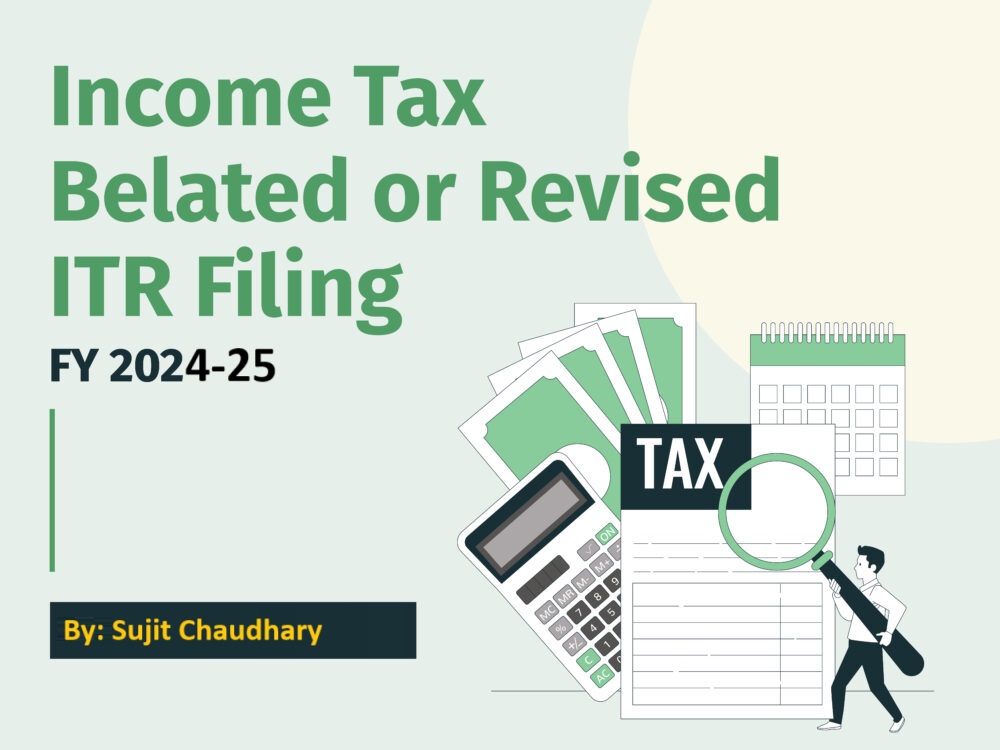Introduction
Section 87A of the Income Tax Act provides a tax rebate to individual taxpayers, effectively reducing their tax liability if their income falls within a specified limit. This rebate is especially beneficial for middle-income earners, as it helps reduce their financial burden and promotes savings. In this article, we’ll explore the key provisions, eligibility criteria, and examples to understand how Section 87A works.
What is Section 87A?
Section 87A allows eligible taxpayers to claim a rebate on their income tax liability. This rebate is deducted directly from the total tax payable, effectively lowering or nullifying the amount owed. It was introduced to provide relief to individuals with lower annual incomes.
Eligibility Criteria for Section 87A
To claim the rebate under Section 87A, an individual must meet the following conditions:
- Residential Status: The taxpayer must be a resident of India for the relevant financial year. Non-resident individuals are not eligible.
- Income Limit:
For Assessment Year (AY) 2024-25, the total taxable income must not exceed ₹7,00,000 under the new tax regime.
For the old tax regime, the income limit remains ₹5,00,000.
- Taxpayer Type:
Only individuals are eligible.
Hindu Undivided Families (HUFs), firms, companies, and other entities cannot claim this rebate.
Key Features of Section 87A
- Maximum Rebate Amount:
For the new tax regime (AY 2024-25): ₹25,000.
For the old tax regime (AY 2024-25): ₹12,500.
- Applicability:
The rebate is available only on the total income tax liability, excluding cess and surcharge.
- Taxable Income: The taxable income is computed after deducting all applicable exemptions and deductions under the Income Tax Act.
Example of Section 87A Rebate
Example 1: Taxpayer under New Tax Regime
Gross Income: ₹6,90,000
Standard Deduction: ₹50,000
Taxable Income: ₹6,40,000
Tax Liability Before Rebate: ₹24,000
Rebate Under Section 87A: ₹24,000 (full rebate as it is less than ₹25,000).
Net Tax Payable: ₹0
Example 2: Taxpayer under Old Tax Regime
Gross Income: ₹4,80,000
Deductions (80C): ₹50,000
Taxable Income: ₹4,30,000
Tax Liability Before Rebate: ₹10,000
Rebate Under Section 87A: ₹10,000 (full rebate as it is less than ₹12,500).
Net Tax Payable: ₹0
Impact of Section 87A on Taxpayers
- Reduced Tax Liability: It significantly reduces or eliminates the tax payable for eligible individuals.
- Encourages Compliance: Middle-income taxpayers are motivated to file their returns and benefit from the rebate.
- Simplified Tax Filing: Taxpayers with incomes within the limit can enjoy the relief without additional documentation.
Points to Remember
- Rebate is Not Refundable: If the rebate amount exceeds the tax liability, the excess is not refunded to the taxpayer.
- Income Limit Changes: The government may revise the income limit or rebate amount in subsequent budgets.
- Cess and Surcharge: The rebate does not apply to health and education cess (4%) or any surcharge.
Frequently Asked Questions (FAQs)
Q1: Can non-residents claim the Section 87A rebate?
No, the rebate is only available to resident individuals.
Q2: Is Section 87A applicable to senior citizens?
Yes, resident senior citizens (aged 60 or above) can also claim the rebate if their taxable income falls within the prescribed limits.
Q3: Does the rebate apply to salaried individuals only?
No, any individual with taxable income, including self-employed professionals, can claim the rebate if eligible.
Conclusion
Section 87A of the Income Tax Act provides significant relief to individuals with lower taxable incomes. By effectively reducing or nullifying the tax liability, it supports financial stability for middle-income earners. Taxpayers should assess their eligibility and file their returns accurately to leverage this benefit. Staying updated on changes to the rebate limits or conditions is crucial for maximizing savings.
For personalized advice, consult a tax professional or refer to the official Income Tax Department guidelines.


